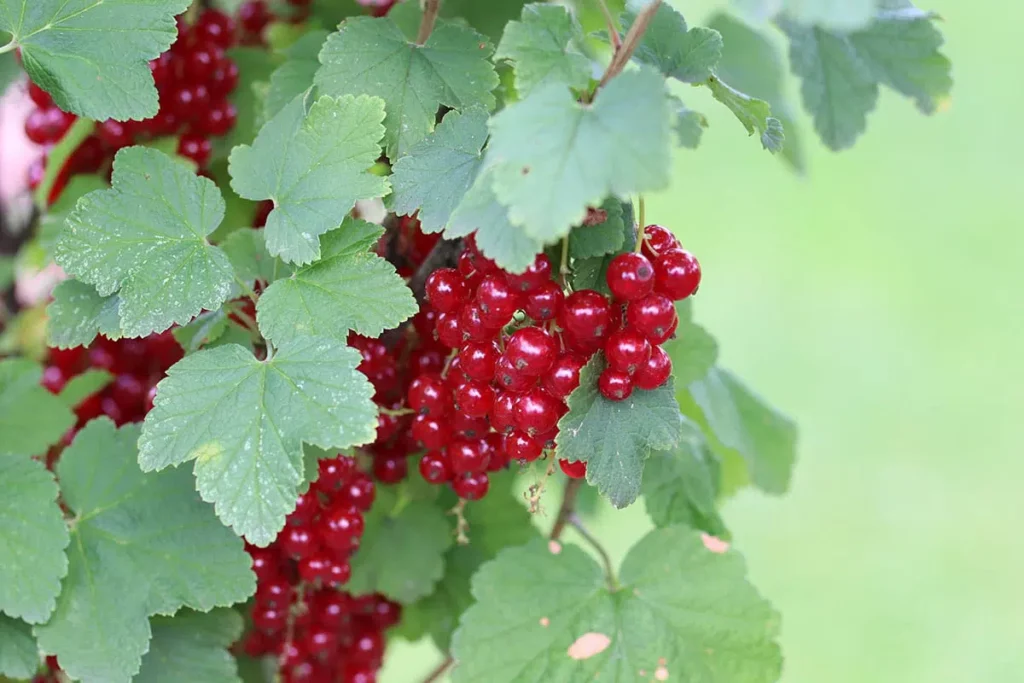For a bountiful harvest currants need an annual summer pruning. This is often called witchcraft, but a few basic rules ensure that pruning the bushes succeed even beginners.
- Summer pruning for red / white and black currants different
- sharp pruning shears and loppers necessary
- ideal time: immediately after harvest
Currants (Ribes)
Currants, known as redcurrants in Austria, are a genus of plants in the gooseberry family (Grossulariaceae). Varieties of white, red and black currants are planted as soft fruits. Since they live for many years, it is worthwhile to regularly rejuvenate the bushes, so that the harvest will be successful.
Summer pruning of white and red currants
Red and white currants bear most of their fruit on the side shoots of two- to three-year-old main branches. Therefore, summer pruning of currants is mainly aimed at renewing the main shoots.
- pruning older branches
Older main branches include all branches that are over three years old. Although they also still bear fruit, but the currants turn out smaller. In addition, the crop yield is lower. Proceed as follows:
- remove two to three of the oldest main shoots annually
- cut directly at the ground
- do not leave stubs
- Tools: pruning shears or small pruning saw
- reduce new ground shoots
New ground shoots make for a good harvest, but too much regrowth limits the yield because too little light reaches the berries. Therefore, only two to three of the new canes remain. They serve as replacements for the older main shoots that you cut off. Cut or uproot all other regrowing ground shoots.
Note: After completing this action, your currant bush should have between eight and a maximum of twelve main shoots, all no more than four years old.
- cut off side shoots and competing shoots close to the ground.
Side shoots that grow below a height of 30 to 40 centimeters are considered near-ground shoots. They are not important for harvesting because the berries do not get enough light to ripen. Competing shoots are steeply ascending branches of the main shoot. They do not bear fruit, so they compact the bush unnecessarily. Therefore, both are removed.
- cut back fruiting shoots
Shoots that bear fruit or have been harvested are best cut back to cones one inch long immediately after harvest. This will grow new fruiting shoots that will bear berries in one to two years. - leave new side shoots standing
To ensure next year’s harvest, keep side shoots that have grown new if they are not too close together. The rule of thumb here is:
- Distance below ten centimeters: cut every second shoot to a short cone.
- Distance above ten centimeters: Side shoot remains
- Note: If you are unsure about spacing, cut one more fruiting shoot than too few.
Contents
Summer pruning of blackcurrants
Unlike red and white currants, most of the fruit on black currants grows on the one-year-old side shoots. Therefore, these shrubs require a different pruning.
- pruning black currant
When summer pruning for black currants, proceed as follows:
- Cut back main shoots annually above the second side shoot
- remove the oldest main shoot directly at the ground
- cut off all weak branches
- leave new shoots
Frequently asked questions
How to prune a currant high trunk?
With the high stem, you perform topiary after harvesting. The goal is to keep the high trunk compact so that it looks pretty. In addition, you should cut back about a quarter of oldest branches to two to five centimeters. Furthermore, remove base shoots and shoots on the stem.
Can I prune currants at an earlier stage?
Currants can also be pruned in the spring before leaf sprouting. However, this is not recommended because the main, lateral and fruiting shoots to be cut are difficult to distinguish at this time.
How can I recognize the oldest shoots?
Old branches on the currant bush can be recognized by the following characteristics:
- have the darkest color
- are strongly woody and the thickest










